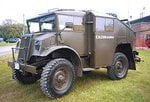davebender
1st Lieutenant
Germany produced this inexpensive artillery tractor like hot rolls. About 25,000 total during 1942 to 1945. During the same time frame Germany produced 16,733 10.5cm artillery pieces. Each light howitzer should have had a prime mover with thousands remaining for AT guns, Nebelwerfer etc. Why isn't the Steyr RSO mentioned in popular histories of the war?
Some nice pictures of a restored Steyr RSO.
Restored Steyr RSO - Wehrmacht-Awards.com Militaria Forums

Some nice pictures of a restored Steyr RSO.
Restored Steyr RSO - Wehrmacht-Awards.com Militaria Forums

